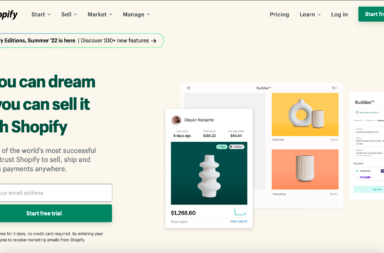Software as a Service, often referred to simply as going to the cloud, basically means running essential business software or systems with a trusted, specialized vendor via a web browser. Top companies will often use multiple SaaS vendors to create an information technology ecosystem that replaces outdated, on-premise hardware and software to drastically lower capital expenditures on technology.

Other benefits of SaaS include:
- Easy customizability
- Greater data security
- Dedicated customer support
- No hardware or software maintenance
- Constantly expanding features without manual updates
- Lessened IT support burden
- Deeper analytics
- Better sales forecasting
- Mobile access
Software as a Service (SaaS) is now ubiquitous, and the market continues to grow. 80% of businesses use SaaS for one or more applications or services. And since 2008, the number of businesses taking advantage of cloud technology has increased by 61%.
SaaS allows even the smallest companies to access leading-edge computing technology that helps accelerate growth and scale while retaining agility and cost-effectiveness.
What makes a killer SaaS company?
Dropbox is a great example of a SaaS company that dislodged an outdated model with the SaaS approach. Instead of storing, securing, managing, syncing, and sharing data from a network hard drive using local software, you can nimbly do all this via your browser. No hardware. No software. You conveniently avoid storage, memory, and security concerns on your network or local device, and can seamlessly share files on any of your internet-connected devices.
Dropbox is also an example of a “born in the cloud” technology company. It easily connects to hundreds of other mission-critical apps like Slack and Salesforce in a corporate environment because it was created with extensibility in mind.
The rapid rise of SaaS companies like Dropbox can be attributed to the work of savvy entrepreneurs with a deep knowledge of technology. They see the web and the technology behind it as a better way to do business.
Departing from legacy technology and building a SaaS solution from the ground up means it works well with other modern apps, and it doesn’t require expensive, time-consuming custom development to connect with analytics software, payment processors, eCommerce sites, tax services, CRM, logistics providers, and the like.
But there are now well over 34,000 SaaS products in the wild. And the options can be overwhelming.
So how do you choose among dozens if not hundreds of SaaS companies claiming that they can do it all for you?
Making the cloud work for you
Despite best intentions, it’s a myth that the cloud will always save you time, decrease your IT maintenance, and operations workload, and ultimately save you money. While SaaS usually does these things, cost savings are dependent on choosing a vendor that can reliably provide uptime, security, customer support, data backup, regulatory and legal compliance, and— more importantly— easy and flexible integration with those other mission-critical applications used to run a business. And don’t forget to consider the economic viability of these often-young companies – will they be there to support you next year?
Success in the world of Direct Selling is dependent on scalability. Finding a SaaS platform that effectively supports your independent salesforce requires analysis to uncover how well your vendor can scale with you. Test the platform first, working with your team and the vendor, to determine what features might be required. A SaaS product may have all the bells and whistles, but remember to choose a solution that fits your budget as your business grows. And if your distributors start succeeding, be sure you can quickly add more features to support that success.

Don’t get locked in: Questions to ask
Direct Selling platform vendors must show you their open source bona fides. Is the vendor’s solution available in an on-premise version? If so, what are the differences?
Will integration with your CRM be plug-and-play? Or will the vendor’s professional services team need to be engaged?
Don’t be afraid to gather customer references on seamless integration claims. If “seamless” integration involves a professional services engagement from the vendor, or from a vendor partner, it may make sense to get quotes and references from a competitor. You may have dozens of apps, even multiple platforms, that require interoperability with your chosen SaaS Direct Selling platform.
Open APIs are a requirement. Are there guides from your potential vendor on API best practices, documentation, real world code examples, and access to a knowledge base?
Ease of integration with a direct selling platform is a good marketing concept, but does your potential new vendor discuss how other clients integrate their platform with common direct selling technologies like Global Payroll Gateway, Avalara, VERB, and Tiled?
Key takeaways
As SaaS adoption increases, and as your direct selling business evolves and grows, the need to adapt with agility to ensure your direct selling software platform works and communicates with new applications and other platforms will be invaluable.
Make sure your vendors are born in the cloud, and ready to adapt to the tech evolution that will inevitably arrive in the form of new apps and new solutions. In the internet economy, technology is essential to creating your competitive advantage— don’t get left behind.


